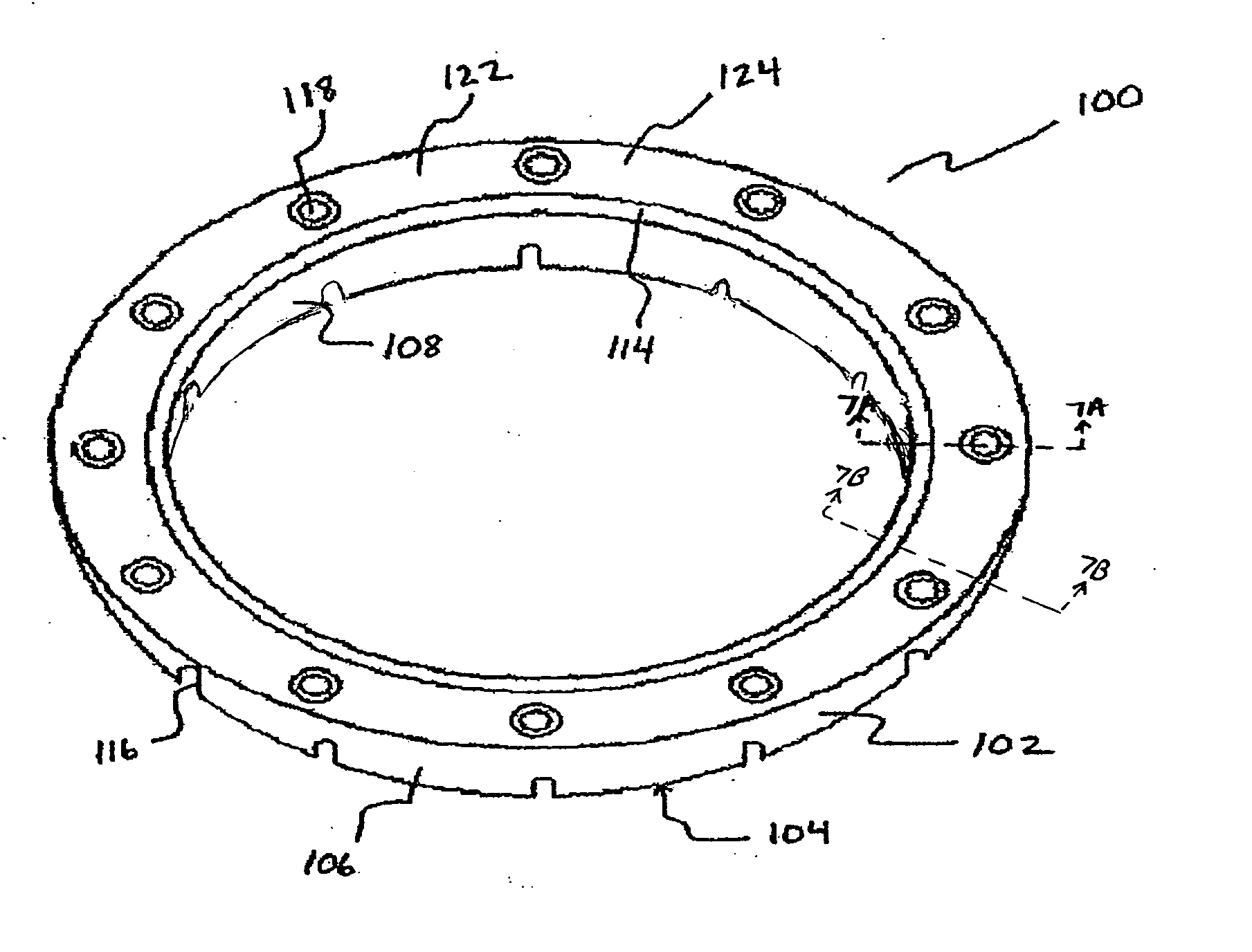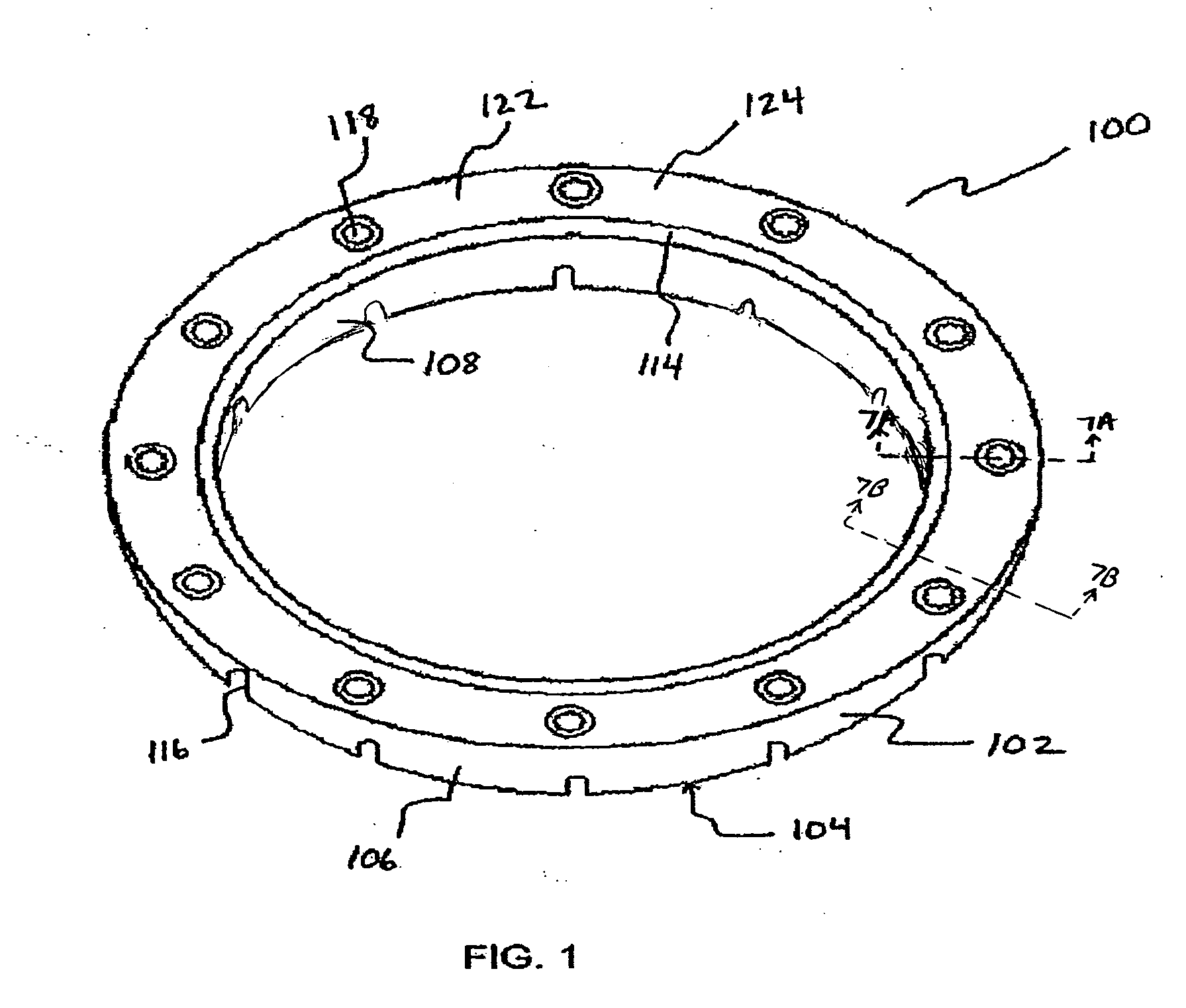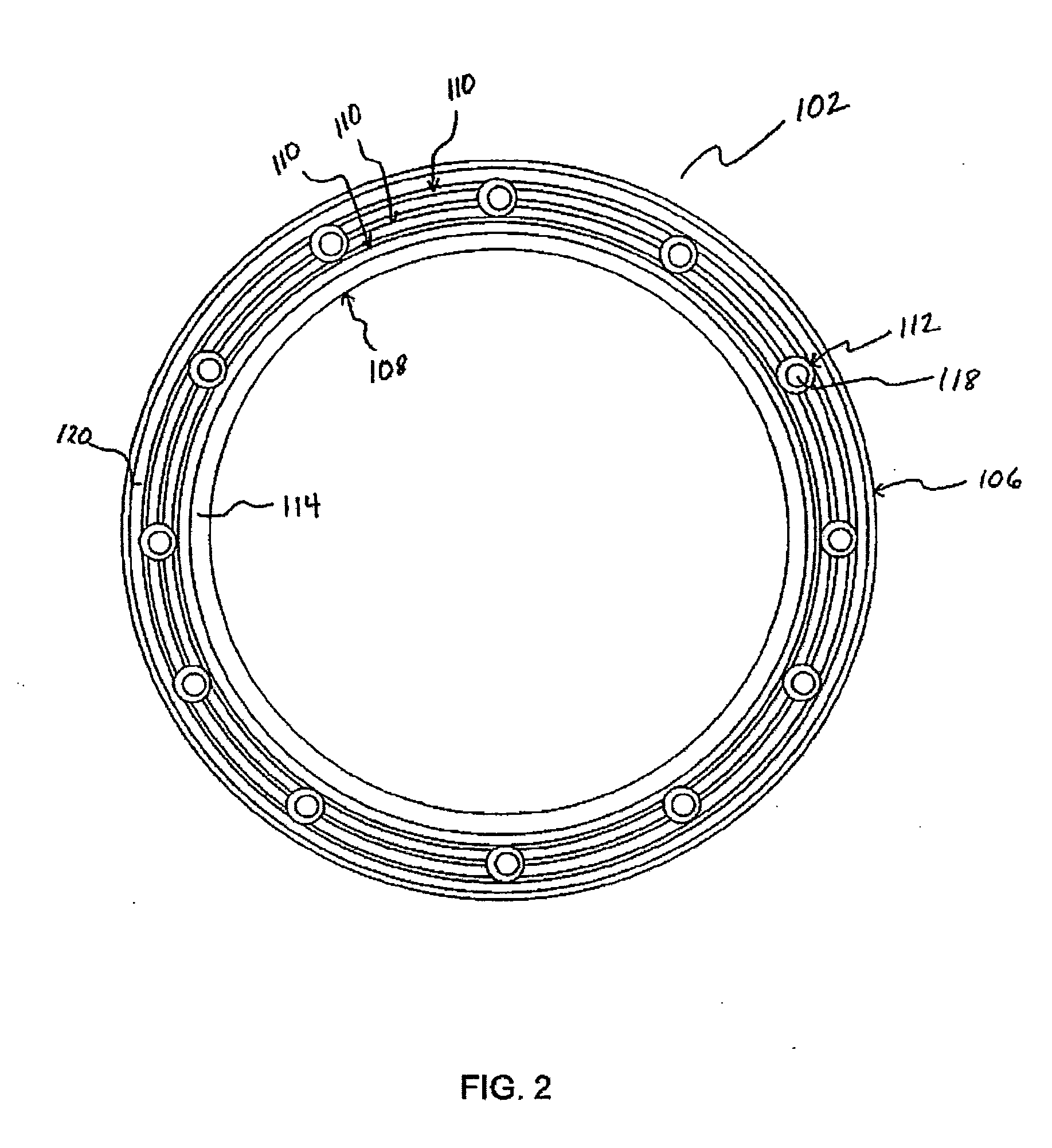CMP retaining ring
a technology of retaining rings and retaining rings, applied in the field of retaining rings, can solve problems such as unsatisfactory changes in dimensions, and achieve the effects of reducing or eliminating deformation, reducing the compressibility of retaining rings, and reducing the wear resistance and elasticity of the base portion
- Summary
- Abstract
- Description
- Claims
- Application Information
AI Technical Summary
Benefits of technology
Problems solved by technology
Method used
Image
Examples
Embodiment Construction
[0052] Referring to FIG. 1, there can be seen a CMP retaining ring 100 according to an embodiment of the present invention. Retaining ring 100 comprises a lower or base portion 102 and an upper or backbone portion 122.
[0053] Referring now to FIG. 2 and FIG. 4, a separated view of lower base portion 102 according to an embodiment of the present invention can be seen. Base portion 102 is generally defined by a flat bottom surface 104, an outer surface 106, an inner surface 108, an upper rim 114, and a recessed portion 120. Recessed portion 120 further includes a plurality of circular ribs 110 and bosses 112 with threaded insert holes 118. Ribs 110 serve to create a solid bond when upper backbone portion is overmolded onto base portion and provide strength to the retaining ring by preventing twisting or bending of the ring 100. Base portion 102 additionally includes channels or grooves 116 extending from outer surface 106 to inner surface 108. Ribs 110 are axial with respect to retain...
PUM
| Property | Measurement | Unit |
|---|---|---|
| angle | aaaaa | aaaaa |
| height | aaaaa | aaaaa |
| height | aaaaa | aaaaa |
Abstract
Description
Claims
Application Information
 Login to View More
Login to View More - R&D
- Intellectual Property
- Life Sciences
- Materials
- Tech Scout
- Unparalleled Data Quality
- Higher Quality Content
- 60% Fewer Hallucinations
Browse by: Latest US Patents, China's latest patents, Technical Efficacy Thesaurus, Application Domain, Technology Topic, Popular Technical Reports.
© 2025 PatSnap. All rights reserved.Legal|Privacy policy|Modern Slavery Act Transparency Statement|Sitemap|About US| Contact US: help@patsnap.com



